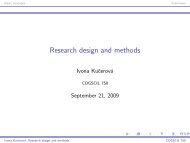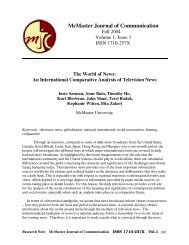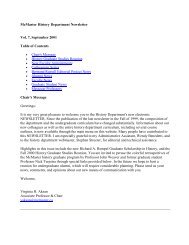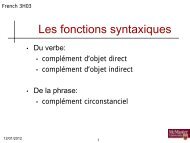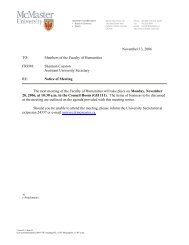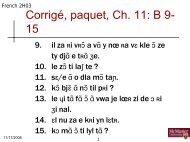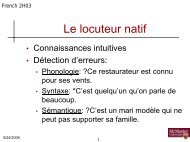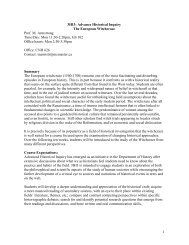The Syntax of Givenness Ivona Kucerová
The Syntax of Givenness Ivona Kucerová
The Syntax of Givenness Ivona Kucerová
Create successful ePaper yourself
Turn your PDF publications into a flip-book with our unique Google optimized e-Paper software.
c. TP<br />
VP<br />
book give to-Peter t book<br />
will<br />
TP<br />
vP<br />
Marie<br />
t V P<br />
But we already know that the perfect partition is irrelevant here. <strong>The</strong> reason is that the<br />
only place where the G-operator may be inserted is between ‘book’ and ‘give’, as in (57).<br />
Any other position would lead to Presupposition failure. <strong>The</strong> position is, however, already<br />
available after the object G-moves within VP. Moving the whole DP does not bring in any<br />
interpretation that would not already be available after the first instance <strong>of</strong> G-movement.<br />
<strong>The</strong>refore, G-movement <strong>of</strong> the whole VP is not licensed.<br />
(57) TP<br />
VP<br />
book G give to-Peter t book<br />
will<br />
TP<br />
vP<br />
Marie<br />
t V P<br />
<strong>The</strong> same reasoning accounts also for the assumption that a constituent containing several<br />
given elements may G-move only if it contains only given elements. If there were any new<br />
element, a G-operator would have to be inserted within the moving constituent, i.e., in the<br />
position in which it would have been inserted if the whole constituent did not undergo G-<br />
movement at all.<br />
Let’s summarize where we stand. We have an operator that can motivate given elements<br />
to be located in the left edge <strong>of</strong> its propositional domain and we know informally how the<br />
distribution <strong>of</strong> the operator can be regulated by the Maximize presupposition maxim. <strong>The</strong><br />
open question is what happens if there is more than one propositional domain per finite<br />
clause. <strong>The</strong> prediction is clear. In principle, any propositional domain might have its own<br />
G-operator in the same way as it can have an independent linear partition between given<br />
and new. Consider the example in (58).<br />
(58) Marie bude knihy prodávat<br />
Marie will books sell<br />
‘Marie will sell the books.’<br />
.<br />
105





